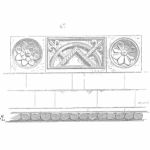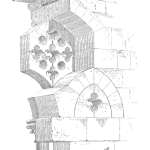
We have been burning wood since days of the caveman. But did you know that wood can also explode?
Logs of wood will not explode but fine dust can lead to a fire and explosion. Let us see why.
[Read more…]Your Reliability Engineering Professional Development Site
Find all articles across all article series listed in reverse chronological order.
by Sanjeev Saraf Leave a Comment

We have been burning wood since days of the caveman. But did you know that wood can also explode?
Logs of wood will not explode but fine dust can lead to a fire and explosion. Let us see why.
[Read more…]by Karl Burnett Leave a Comment

In the 15th century, the English Royal Navy did not exist as a standing force. When needed, the Royal Navy was temporarily assembled using rented merchant ships. Henry VIII expanded England’s fleet from a handful of small converted merchant ships to a force of 30 purpose-built warships. He established government dockyards, the Admiralty, and the Navy Board. Starting in 1546, the Navy Board was a permanent part of the government.
Warships owned by the government had no other purpose and suddenly gave the government a new kind of asset to manage.
[Read more…]by Greg Hutchins Leave a Comment

Almost daily, we hear of some problem in the supply chain. A few weeks ago, a container ship got stuck in the Suez Canal and hundreds of ships were backed up with no place to go. As well, original equipment manufacturers in Europe missed critical parts because of their Just in Time delivery practices.
[Read more…]by Mike Sondalini Leave a Comment

Road Tanker Design For Fast Unloading And Onshore Pump Drain Tank. To completely empty a road tanker the compartments need to be designed to have a sump that permits total drain-out of the liquid from the lowest point. If a pump is mounted on the trailer, it is best mounted under the trailer. Where a pump is mounted on the tray or fenders it will cavitate at low tanker liquid levels. For an onshore unloading pump installation it is best to install a buffer tank between the tanker and onshore pump to let the road tanker completely drain-out before the pump starts cavitating. Tanker load-out pumps must have a very low net positive suction head requirement.
[Read more…]by Ray Harkins Leave a Comment

Everyone working in a decision-making role has at least an intuitive understanding of the concept of opportunity costs-the value of the thing you didn’t choose. Simply stated, when you say ‘Yes’ to one thing, you simultaneously say ‘No’ to everything else you could have chosen instead. And those things to which you say ‘No’ have a value that you’re relinquishing. When I was a teenager, I heard an older gentleman quip, “When I said ‘I do’ to my wife, I was also saying ‘I don’t’ to all the other girls out there”. That man understood opportunity cost.
[Read more…]by Sanjeev Saraf Leave a Comment

Methane being extremely flammable, the fire and gas detection (FGD) system in LNG facilities should be capable of early detection of flammable gas leading to shutdown/isolation and depressurization.
[Read more…]Leading is about learning to be a facilitator – Ashif Shaikh
Ask yourself, when teams work very well together, what are the positive characteristics of the team leader? When teams are dysfunctional, and have poor outcomes, what skills of the leader need to be improved?
Giving proper feedback is a great way to help a colleague improve FMEA facilitation skills. Carefully listening to feedback from a colleague is an important way to improve one’s own FMEA facilitation skills. Both are aided by understanding and using facilitation quality objectives. [Read more…]
by Greg Hutchins Leave a Comment

In February 2021, the Organization for Economic Cooperation and Development (OECD) published an Enterprise Risk Management Maturity Model. This model is designed for Tax Administration Agencies. It is the culmination of work that began in 2018. This work was designed to develop stand-alone maturity models for a broad range of organizational activities. One of which was Enterprise Risk Management. This piece examines this model and discusses how such models are being used by government elsewhere.
[Read more…]
This simple example explains how to calculate the failure rate of parts, known as the Hazard Rate, using a drinking glass. Historic records, like maintenance, operating, supply chain, and financial information, are accessed to understand the situation being analyzed and gather modelling data. Once all necessary information is collected and the situation is investigated, then proposals to address and solve the problems causing and permitting the failure to happen are selected and a business case is developed.
[Read more…]
“Aircraft LRUs test NFF (No-Failure-Found) approximately 50% of the time” {Anderson] Wabash Magnetics claimed returned crankshaft position sensors had 89-90% NTF (No-Trouble-Found), Uniphase had 20%, Apple computer had 50% [George].
[Read more…]by Nancy Regan Leave a Comment

In this episode, we answer two questions: 1) What is Reliability? 2) How do we get the Reliability we need from our machines? Nancy also discusses how we design our Reliability both literally and figuratively. The quality of our proactive maintenance and Default Strategies largely determines the Reliability we get from our equipment. Inherent Reliability is explained.
[Read more…]by Sanjeev Saraf Leave a Comment

Lithium batteries catch fire if the anode and cathode materials contact each other. What causes short-circuit leading to anode-cathode contact?
[Read more…]by Robert (Bob) J. Latino Leave a Comment

About 13 years ago, I began a reliability journey at a large paper mill. At that time, the mill was pretty reactive and I was naïve enough to think I was going to single handedly turn it around. While I thought I had all the answers and was going to teach the mill a thing or two about reliability, it ended up teaching me a hell of a lot more.
[Read more…]by Mike Sondalini Leave a Comment

Value Stream Mapping is a business process improvement tool. It derives from the Toyota Production System where it was used to identify the seven wastes in a production process. It is now used across all business processes because the principle of finding and removing waste applies throughout every business.
[Read more…]by Greg Hutchins Leave a Comment

The Pareto Principle, or more commonly the “80/20 rule”, is based upon the observation that 80% of the consequences of something are attributable to 20% of the causes. The quality guru Joseph Moses Juran named the Principle in 1941 after the Italian economist who, in 1896, observed that 80% of the land in Italy was owned by 20% of the population. The centenarian also similarly observed that 80% of quality problems result from 20% of the causes. In the business world we also see that 80% of a company’s revenue is generated by only 20% of its customers. As with life, things are not distributed either evenly or even fairly.
[Read more…]